Enniskillen workhouse's heart-breaking stories
- Published
The history of the Enniskillen Workhouse dates back to 1845
The only surviving building of Enniskillen Workhouse has been transformed into a business enterprise hub and heritage centre.
The site originally opened on 1 December 1845 to accommodate people who found themselves in financial distress.
The Grade B2 listed entrance block was redeveloped with a £2.3m grant from the National Lottery Heritage Fund.
The building was one of 160 workhouses throughout Ireland designed by architect George Wilkinson.
During the Great Famine about 10,000 people passed through its doors in a four-year period.
Of those about one in five died and was buried in a paupers' graveyard or other graveyards in the town.
'Heart-breaking stories'
Catherine Scott, from Fermanagh County Museum, said one of the most important parts of the project was transcribing the admission records.
She said people could come and discover "who was in the workhouse, how long they spent in the workhouse, and why they were here, and you can imagine just how heart-breaking the stories are".
Ms Scott added that the famine period was just four years of the history of the building and the subsequent 100 were equally fascinating.
"The people who find themselves dispossessed of everything that they own, and in the workhouse system and how society treated them - all sorts of stories will be told now that the workhouse is open."
The main workhouse was demolished in 1964 and the entrance block became part of the Erne Hospital.
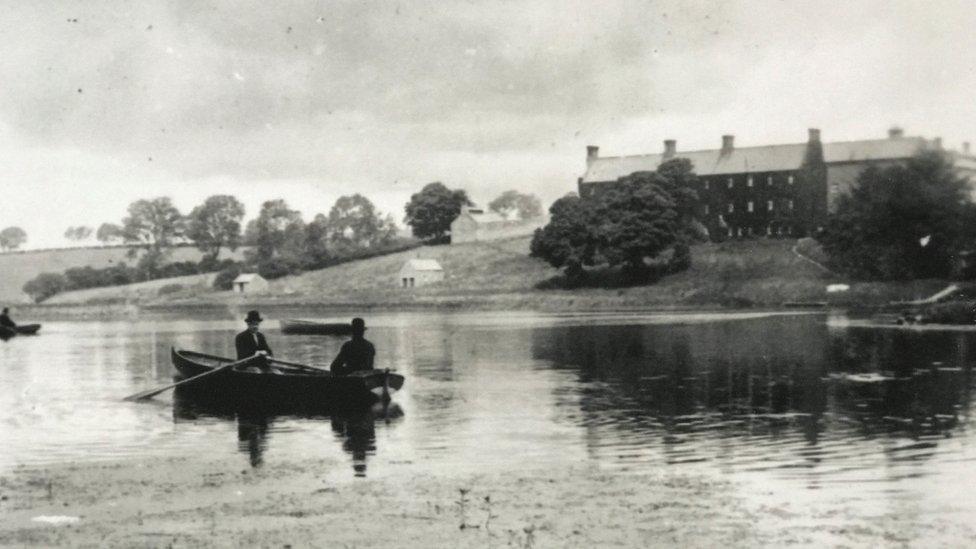
The workhouse first opened in December 1845
After the hospital closed 10 years ago, the workhouse building was identified as being at risk and in need of urgent repair.
It is now part of the South West College Enniskillen Campus.
The redevelopment was a collaboration between the college and Fermanagh and Omagh District Council.
As part of the restoration apprenticeships were created to provide training in heritage and craft skills.
Students gained accreditation in traditional stone masonry, plastering and joinery.
Part of the ground floor has been developed as mixed-use exhibition, reminiscence and display space.
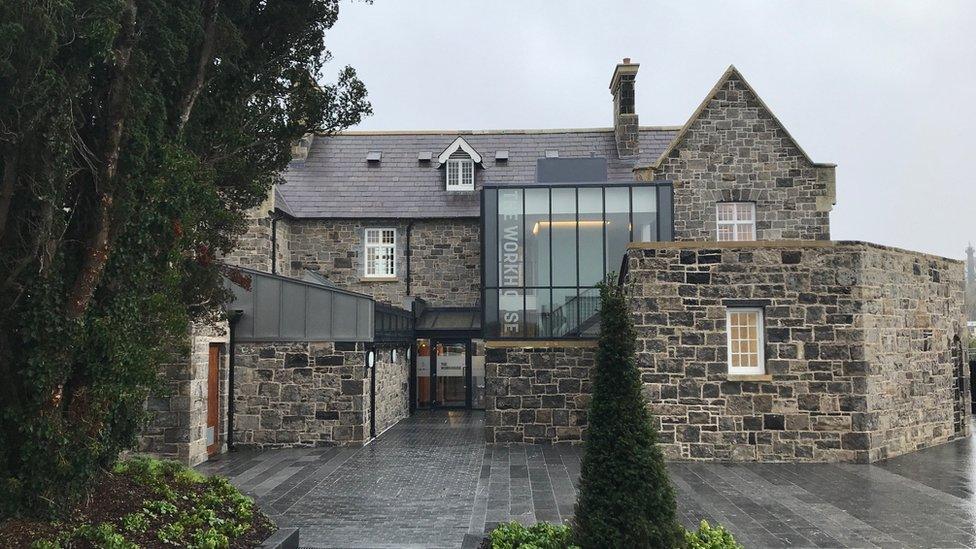
The building will now be used as a heritage centre and a business enterprise hub
The first floor space has been revitalised as a state-of-the-art hub for business innovation and enterprise.
Some of the surviving workhouse records along with numerous artefacts are on display.
Amongst the discoveries made during the restoration work were several concealed shoes in the attic, including one pair tied together with string.
Ms Scott said worn out shoes had been concealed in buildings since the 13th century and were meant to bring luck.
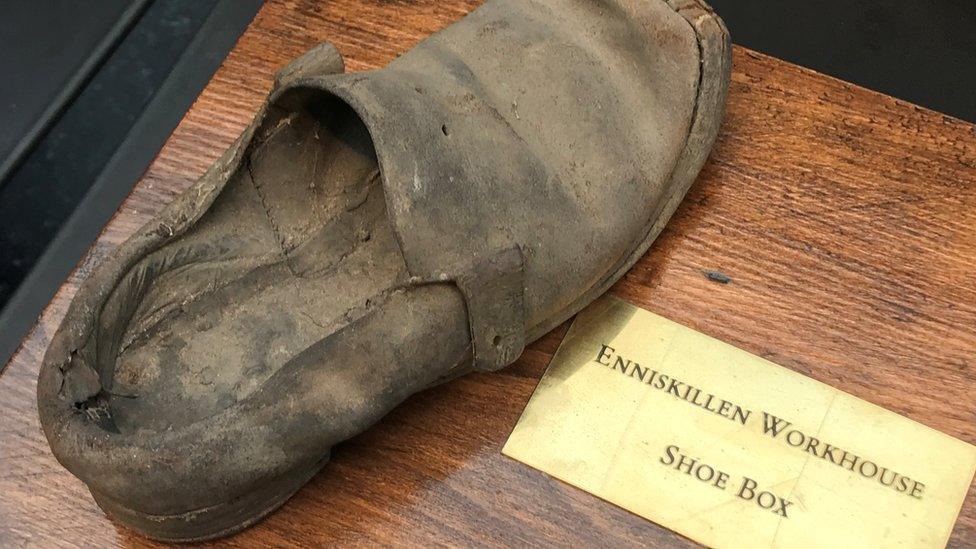
This concealed shoe found in 2021 will be returned to the workhouse attic in a box made from the original
She believes they played a role in saving the building as it had originally been marked for demolition in the 1950s.
Some of the shoes are on display but one will be returned to its original hiding place in the attic, inside a wood box made from the original floorboards.
Workers also discovered hundreds of cows teeth.
Research revealed that the Impartial Reporter newspaper had carried an advertisement for cows heads to make soup for the inmates.
Ms Scott said they also found "the most beautiful bible" belonging to a young boy called William Ferguson.
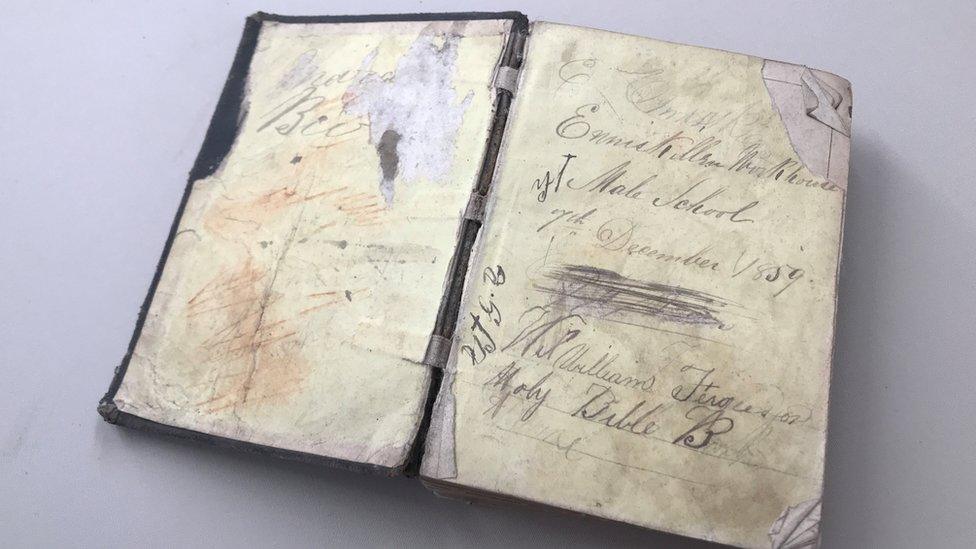
An 1859 bible which belonged to a young pupil at Enniskillen Workhouse Male School called William Ferguson is in the collection
"The teacher has obviously started to write his name in pencil, in beautiful script, and he started to trace his name over it," she said.
Future research will try to discover what became of William Ferguson.
Inside the original entrance door is the workhouse bell which had been in storage in Fermanagh County Museum.
Ms Scott said the bell was "of huge significance" and it belonged in the workhouse.
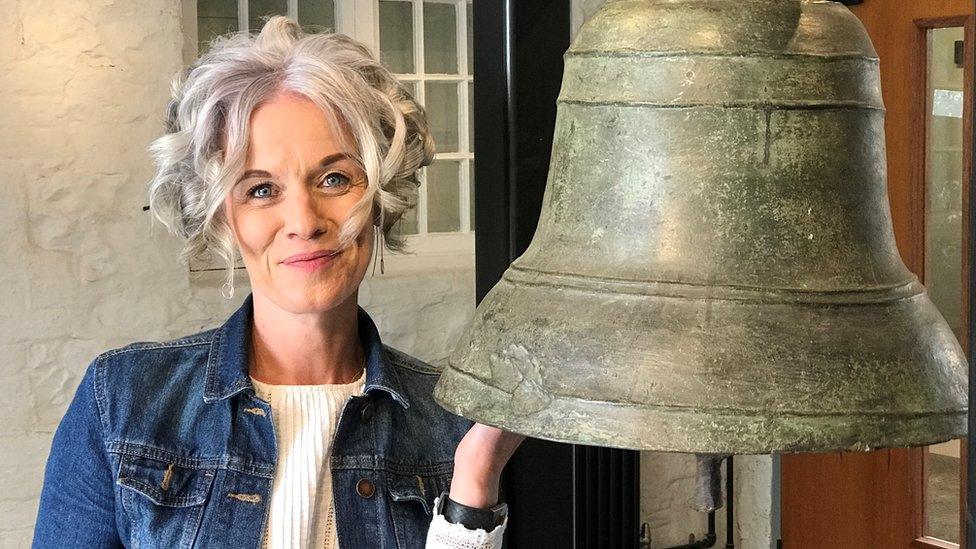
Catherine Scott from Enniskillen Castle Museums with the workhouse bell
"At this time of year, the bell would have sounded at seven o'clock in the morning for the inmates to get up, to eat, time obviously then to pray, for the children to go to school, and also then to signal different stages throughout the day."
She said the stories of the thousands of people who were born, reared, educated, and lived in the workhouse will now be preserved.
"Who opened the door, who sounded off the bell, who wore the shoes?" she said.
"I think that's the rather exciting thing about the building being reopened is that their stories, their lives, the sounds of their voices, hopefully will be able to be heard again.
"We just need to listen."